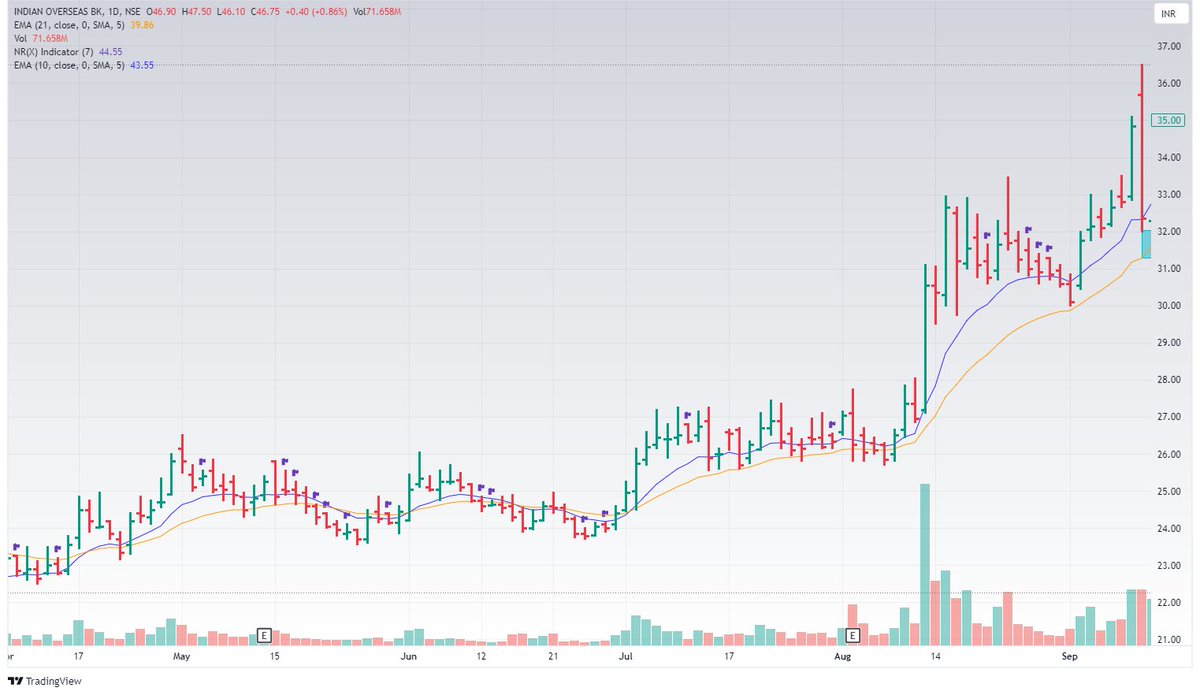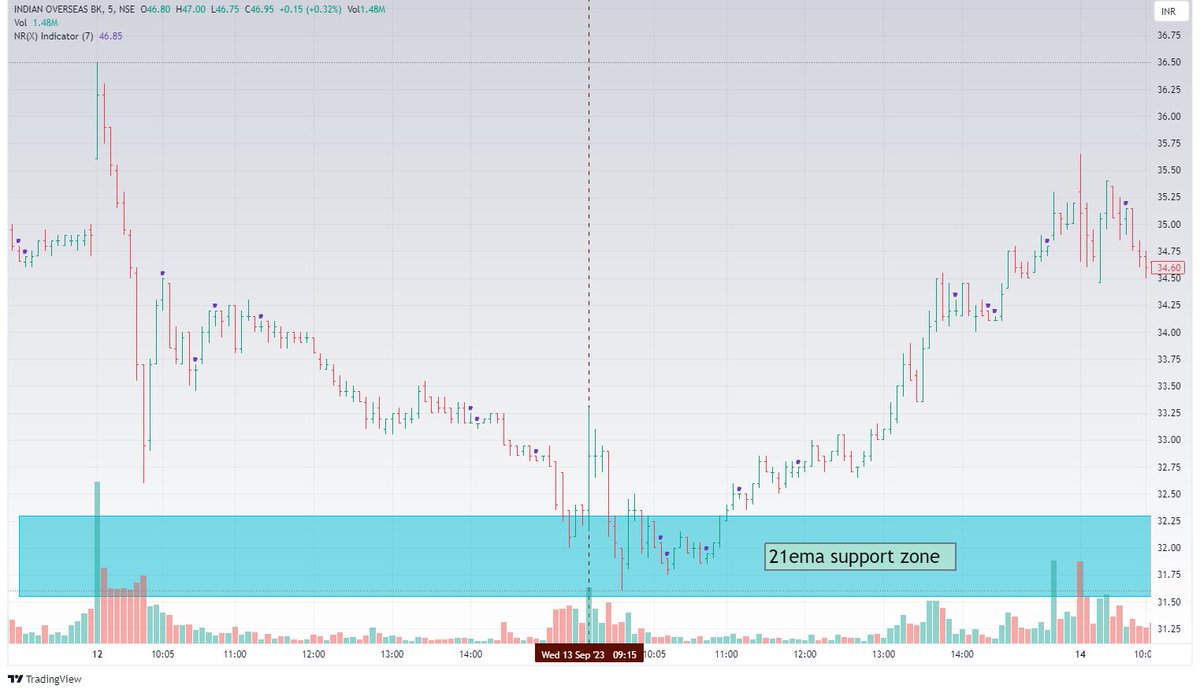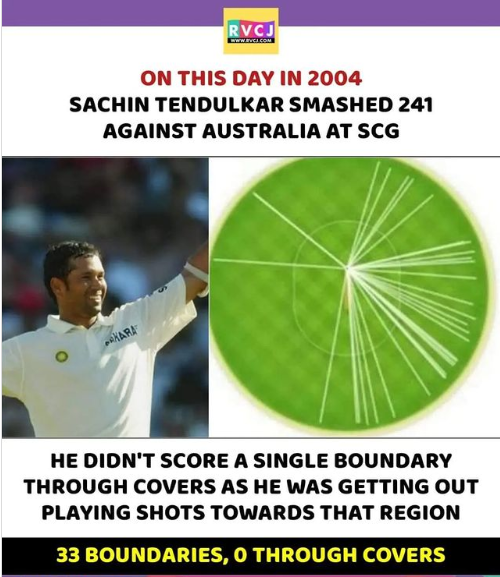We often restrict our trading to the perfect setups in the perfect market conditions. If we don't find them to be perfect, the default response is to step aside and stop trading. The logic has merit, but it is conditional and not as straightforward as claimed.
Here is my counter argument:
Throughout most of your trading career, the stock setup, market conditions, and mindset will not align in the same direction. Trading involves dealing with fluid probabilities in imperfect conditions and making the best of them. It's about finding realistic solutions, not magical ones. Trading skills are tested and optimized in sideways and choppy markets. Trending markets only amplify their efficiency.
If you fall into either of the following categories, you cannot afford to stay on the sidelines for long-
Full Time Traders:
In the past two weeks, many tweets advised staying in cash and waiting for better follow-through in breakouts. It surprised me that most of these tweets were from full-time traders whose main income would ideally come from trading profits. It is challenging for any business to maintain efficiency if it has stockouts for 6-8 months every year. It may be manageable in the US markets, where a limited time window can compensate for inactivity due to higher liquidity, stocks, and leverage. However, applying the same rules in Indian markets can be challenging, unless you have a sizable portfolio (1cr+) to sustain lean periods without impacting your lifestyle.
Pro traders seamlessly fluctuate between swing trades, scalps, and reversals depending on the market and setups. A good example is @markminervini trade management strategy in the 2021 USIC. He noticed the lack of follow-through in breakouts and adjusted his strategy to focus on short-term trades lasting 1-5 days and scalps. He increased the frequency of his trades for quicker profits and emphasized compounding those profits instead of chasing home runs.
At times, it may feel like you are fighting for “hard pennies” but you need to keep the scoreboard ticking and can't just wait for full tosses to hit boundaries. Being a single timeframe one-dimensional breakout trader, who relies on trading profits for sustenance, will exert significant life pressures. If you have dedicated your life solely to trading, you cannot restrict your learning and skills based on information that are easier to sell.
Newer Traders:
Reading Minervini's books will teach you about VCP and stages, but it doesn't mean that you will be able to trade it immediately with the right market context. To achieve proficiency, you will need to develop procedural memory and go through the grind, often to end up with similar insights but with FAITH and nuances that are unique to you. The books are meant to show you the right direction and have been written to prevent misinterpretation that could lead traders to ruin in “hard penny” markets. However it is your responsibility to go beyond that and seek answers based on your experience rather than blindly following public templates.
Choppy or whipsaw markets are not like bear markets. Setups appear optically good, but they either have a high squat percentage on the same day or lack follow-through on the next day. These setups, despite having a low effort-reward ratio, are still tradeable and offer good opportunities to improve trade management skills. The ability to do nothing is an edge, iff you have actually traded in choppy markets and have developed the instinct to manage its ebbs and flows. Otherwise, staying on the sidelines in every imperfect market condition will only prolong your learning curve.
The trading skills which you develop in tough environments will improve your probabilities and mental ability for super performance when the markets are “easy dollar”. A smooth sea never made a skilled sailor.
Caveats
There is a tendency to overtrade in choppy markets, which I grapple with and err often too. But the fear of making mistakes cannot become so re-enforcing that it cripples you from action. The intent is to be trigger-ready while also being prepared to withdraw quickly, rather than completely removing your hand from the gun. This does not require adding unnecessary risk or incurring drawdowns from which you cannot recover.
Over time, as you gain a better grip on situational awareness and procedural memory, you will develop your instinct for when to test trades, when to not test trades and when to increase your position size and risk. Your instinct may still keep you in the sidelines, but the awareness and execution is very different.
Inputs on market pullbacks
During pullbacks in a strong uptrend, our primary bias is for the price to pause near its support levels and then resume its upmove. This upmove is usually preceded by a period of reduced volatility or consolidation, which is often only visible on zooming in on intraday charts. The probabilities of buying pullbacks near support zones in high momentum stocks are better in such markets than buying resistance breakouts.
I had erred, like many others still do, in differentiating between relative strength (RS) and momentum strength. This was also echoed by the wonderful @AsymTrading in his post on 23th September - “A stock with momentum almost always has relative strength, but a stock with relative strength doesn't always have momentum. You can determine relative strength easily by seeing what holds up the best during the decline, but you can only determine momentum AFTER the stock has moved.”During a market correction, the absence of selling in a stock does not necessarily indicate that the buying force will be the first to resume during an upswing.
Lets take an example - PSUs, including PSU banks, have been one of the strongest sectors this year.
IOB had broken out from a big base, accompanied by high trading volumes and trailing the 10/21ema. On September 12th, during the market pullback, the stock pulled back sharply and closed near its 10ema. Now, the primary momentum principle is for the stock to halt its pullback near the support levels of the moving averages, possibly consolidate, and then resume its upmove.
This is exactly what happened -



You will observe this in most PSU banks (PNB, PSB, Maha, Uco, Union) and several other stocks that were in strong momentum in the last few months and have moved up again in the last two weeks. Strong momentum stocks may have sharper pullbacks due to market pressure, but they often bounce back higher if there is no follow-through selling or when the market pressure eases.
These are not the typical “good looking” RS trades which we are accustomed to, but they adhere to every momentum principle we have learnt. This is not a new observation, and you can study its repetitions during the initial pullbacks of every new market trend. The concept of expectation failure or trapped traders, where a lack of follow-through action in the expected direction leads to stronger moves in the opposite direction, is a good risk reward trade and can often be found in the works of @LanceBeggs and Wyckoff.
Trade management needs to be tighter here. You would need to enter as close as possible to the upmove before the traditional pivot points and leave minimal room for squats by aggressively trailing the stop loss.
Caveats
The motive here is not to object to any person or method, or for you to borrow my thoughts, but to urge you to look beyond the generic quotes and grind bar by bar to develop FAITH in your own observations which will make you more money. The given example may not suit you, and that is completely ok because it is based on my own observation and “chart eye”. However, the underlying principle remains true and its executions can be further improved according to your own “chart eye”
The execution in such markets requires additional practise and screentime but that is anyway a non-negotiable, if you are a full time trader or an aspiring full time trader.
If there had been follow-through selling, needless to say, the probability of the upmove in the example would have been much lower, as its underlying principle would have been violated.
This is not a buy/ sell call on any stock or sector. Although my bias remains overall bullish, I anticipate a correction in either time or price for most stocks and indices for the 50dma to catch up.
Takeaway
Trading in choppy markets are like leg days in the gym: the toughest days with lower aesthetic impact, but the most important for building a strong foundation. The craft demands high effort and also rewards highly, where the best answers are often found in the darkest forbidden questions.
Even Gods need to hustle.

.jpg)